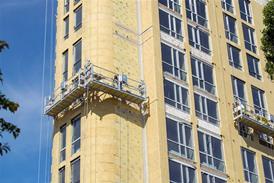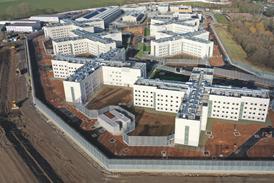Outdoor sensors started to receive widespread consideration in the general marketplace about ten years ago. Refinements, especially in digital signal processing (DSP), had and continue to enhance performance both in detection and in the rejection of environmental and other non-threat sources. Costs also came down significantly, allowing commercialisation of the sensors.
The paradigm of perimeter protection has changed. More efficient use is being made of the human element in the total security system: monitoring the security systems, making decisions based on the information provided and providing the response force instead of being a sentry posted along the perimeter. Today's security professional can choose from a range of intrusion detection sensor technologies to address the spectrum of threat scenarios, environmental conditions, site constraints, nuisance alarm considerations and federal and state regulations.
The Basics
There are five basic elements in an outdoor perimeter security system –
- Deter: The perimeter should be designed in such a way as to clearly indicate the boundaries of the protected area, while discouraging easy access to that area.
- Detect: When access to the protected area does occur, the outdoor perimeter sensor system provides early warning that unauthorised entry has occurred.
- Delay: Inherent in the detection process should be adequate delay to permit proper assessment of the intruder as well as delay in reaching critical assets.
- Assess: The alarm has to be assessed to provide positive confirmation that it is a valid alarm.
- Respond: Based on the assessment, appropriate action is taken.
Before the security professional can select an appropriate sensor or sensor technology, they have to understand the nature of the threat and the sophistication of the intruder. Threat scenarios have to be analysed and a clear distinction made between real and perceived threats. The site topography has to be understood and the availability of a "clear zone" (or lack thereof) has to be established.
Performance Parameters
In selecting a sensor technology or a specific product, a security professional should look at performance with regard to several criteria including:
- the probability of detection (PD)
the vulnerability to defeat (VD) - the false alarm rate (FAR)
- the nuisance alarm rate (NAR)
These criteria equate to strengths and weaknesses, and understanding them is vital to selecting the right technology for the application.
PD is the likelihood, expressed as a percentage, that the sensor will recognise an intruder within the detection zone. The sensor's PD is conditional on target characteristics (such as mass, size, speed, and orientation), sensitivity settings, weather conditions, site conditions, and proper maintenance of the equipment. A PD of 100 per cent can be achieved by making the sensor so sensitive that the NAR becomes unacceptably high. The PD for outdoor sensors is typically specified at 99 per cent, with anything less than 95 per cent considered unacceptable. A PD of 95 per cent means that one in twenty intrusions will not be detected.
VD is the likelihood that a sensor can be defeated, (e.g. by bypass or spoofing). Each sensor technology has different vulnerabilities inherent in the design. VD also depends on the intruder's foreknowledge of the system, the availability of support (e.g. ladders), and both the operational readiness and state of maintenance of the system. VD can be minimised by using covert (hidden) sensors, by combining sensor technologies for high-risk sites and by eliminating weak points in the perimeter coverage.
FAR is the rate of invalid alarms caused by unknown sources. Typically, the cause is the sensor's own self-generated noise, but it can also include temperature extremes above or below what the sensor's electronics were designed to withstand, poor grounding, faulty or improper electrical connections, power supply voltage fluctuations, damage to equipment done during installation, and poor sensor maintenance. FAR is normally expressed as a number per day, month or year per sensor. FAR is normally negligible and can range from one per month for low-end sensors to one per year for high-end.
NAR is the rate of invalid alarms caused by identifiable non-threat sources. NAR is also normally expressed as a number per day or month per sensor. NAR differs from FAR in that the source of the alarm can be identified by the system operator, typically by remote CCTV. NAR is most commonly associated with small animals, environmental influences (such as heavy winds, rain, blowing snow, fog, hail, day/night, etc.), terrain conditions, vegetation and non-threat personnel in the detection zone. NAR will vary considerably depending on the technology, the application and site conditions. A typical high-end sensor will have a NAR of one per month, whereas low-end sensors can have several per day. It is the responsibility of the security professional to determine what is an acceptable NAR for a particular application. Zero NAR is not achievable in any application. A NAR that is too high leads to a lack of confidence in the sensor, resulting in the sensor being turned off or the alarms being ignored.
Proper management of the system's FAR/NAR is critical to the effectiveness of a perimeter protection system. Without assessment, these invalid alarms can result in an unacceptably high dispatch rate and a security system that is either ignored or shut down by its human monitors.
Fortunately, techniques for managing invalid alarm rates have been developed. These include selecting the proper technology for the application, supplementing intrusion detection sensors with CCTV for remote assessment of each event, paying proper attention to site specifics, following the recommendations of the manufacturer, and providing sufficient operation and maintenance support and budget for the system and the site.
The Categories
Sensor technologies can be compared in at least five categories-
The Technologies
This primer will briefly describe thirteen sensor technologies.
The only consistent contributors to NAR are moving surface water and moving metal objects in the detection zone. The VD is considered to be the lowest of the sensor technologies available.
Recent developments include using DSP to enhance detection and minimise NAR, improvements in the sensing cable to include power and data distribution, and the ability to display the intrusion location within 3m (10ft).
Wind, hail, rain, snow, animals, blowing trash and vegetation hitting the fence can all affect NAR. This technology is considered to have a medium VD level because contact with the fence is necessary for detection.
Monostatic microwave sensors incorporate a transmitter and receiver in the same unit. The receiver detects microwave energy reflected from objects moving in the detection field. These units are most commonly used for short zones or as a gap-filler for other sensors.
Recent developments in microwave sensors include a digital processor that enhances the networking of processors and enables remote maintenance and diagnostics. The distance between the transmitter and the receiver (bistatic units) can affect PD. Some of the common NAR problems associated with microwave sensors are moving metal objects such as chain link fences that flex in the wind, wandering animals and birds, blowing debris, surface water, moving vegetation, and blowing sand and snow. Microwave sensors are considered to have a medium level of vulnerability.
Source
Security Installer
Postscript
Fax 01386 834477, email: senstaruk@senstarstellar.com.
Web: www.senstarstellar.co.uk




















No comments yet